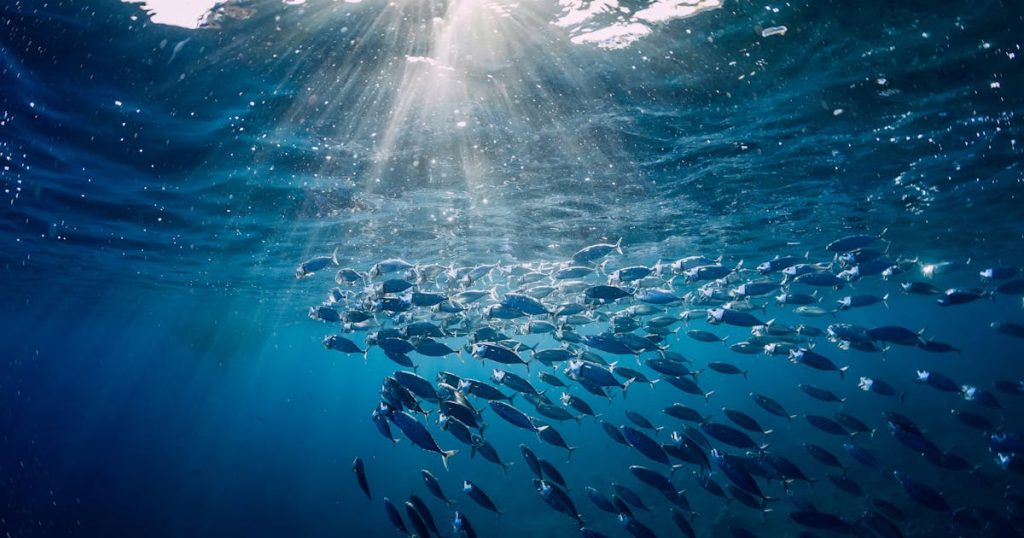Protecting the ocean benefits people and nature
4 min read
Across the globe, climate change, pollution and overfishing are endangering our oceans. But not all efforts to protect them are created equal. Some allow carefully managed fishing, while others restrict all human activity. In nearly all cases, the benefits to nature are clear: Marine protected areas — designated by governments to maintain healthy oceans — help fish populations and ecosystems recover and flourish.
But what about the impact on people living near these marine protected areas? In a new study, researchers from Conservation International, the Smithsonian Institution and World Wildlife Fund have uncovered evidence that marine protected areas offer significant benefits for both reef biodiversity and coastal communities.
“There’s always been this lingering question about the effectiveness of marine protected areas — do they truly benefit people and nature?” said Smithsonian scientist and Conservation International fellow Justin Nowakowski, the lead author of the paper. “Our results show a connection between high levels of human health and well-being, and healthy fisheries in the communities we studied.”
Nowakowski and fellow researchers focused on the Mesoamerican Reef, a swath of the Caribbean Sea that spans 1,000 kilometers (621 miles) along the coasts of Mexico, Belize, Guatemala and Honduras. These waters include lush mangrove forests, seagrass meadows and the second largest barrier reef system in the world, after Australia’s Great Barrier Reef. In total, close to 3 million people live and work on these shores.
© Luciano Candisani/Smithsonian Institution. Small scale fishers paddle above a reef in Utila, Honduras
“This remarkable concentration of diverse ecosystems that also support a massive number of people really made this an ideal place to launch our study,” said the Smithsonian Institution’s Steve Canty, a co-author of the study. “It’s one of the best studied and documented marine regions in the world. This gave us an unparalleled long-term perspective on the impact of these marine protected areas, going back decades.”
To obtain reliable results, the researchers used underwater visual surveys to measure the abundance of reef fish, and demographic and health surveys to assess the well-being of nearby communities — including their income, food security and malnutrition rates.
They found that marine protected areas with the highest protections had on average 27 percent more fish than open-access zones with no restrictions. Additionally, young children that lived near a marine protected area were roughly half as likely to suffer stunted growth, a key indicator of food insecurity. And the average wealth index, a measure of relative household income, was 33 percent higher in communities near the best protected ocean areas.
“We’re connecting the dots,” said Conservation International’s Sebastien Costedoat, a study co-author. “In the past, scientists have been able to say that marine protected areas are boosting fish populations — full stop. Other evaluations have shown all of the remarkable benefits that these marine protected areas are giving to people. Our goal has been to ask whether marine protected areas have potential to promote co-benefits. Our study suggests that they can — under the right conditions.”
This caveat is critical, researchers said. Well-enforced marine protected areas yield better results for people — and those designed hand-in-hand with local communities are the most effective.
Canty said that fishers in communities like Utila Cays, Honduras and Guanaja, Honduras are often the first to see that fisheries are in decline — and have led the charge in designing marine protected areas, with support from scientists. By incorporating scientific knowledge and local wisdom, governments can make more strategic decisions regarding the placement of marine protected areas.
“It’s understandable that local communities are sometimes wary of placing strict restrictions on their most prime fishing spots,” Canty added. “Those concerns should be taken seriously.”
 © Pete Oxford/Smithsonian Institution. Grunts and horse-eye jack fish swim above a reef in Hol Chan Marine Reserve, Belize
© Pete Oxford/Smithsonian Institution. Grunts and horse-eye jack fish swim above a reef in Hol Chan Marine Reserve, Belize
Scientists can help communities find secondary locations to protect against overfishing. That can prompt a “spillover effect” — meaning that as fish populations bounce back in marine protected areas, they move beyond them into places where fishing has continued, he said. In the end, this benefits the entire ecosystem.
“It’s all about balance,” Canty said. “From a purely scientific lens, it’d be easy to gripe that this is not ideal in terms of what we really want, ecologically. But, in the long run, it’s actually the most optimal way of doing things. The community led it, designed it and then they adhere to. These are their own rules, and now, even years on, it’s still being well-respected.”
The study’s findings carry significant weight as efforts are underway to expand marine protections to meet global targets aimed at protecting at least 30 percent of the planet’s terrestrial and marine ecosystems by 2030 — part of a pact agreed to last year at the United Nations Biodiversity Conference. Newly established marine protected areas are critical to meeting those goals. However, Nowakowski points out that little research has been conducted to determine whether these areas can also help achieve the United Nations’ Sustainable Development Goals, especially those related to food security and alleviating poverty.
“International agreements are often built on the assumption that protected areas do indeed work for people, as well as nature,” Nowakowski said. “That’s why monitoring and evaluation is so key to this whole process — making sure our actions are really having the intended effect. Sure, it may not be flashy, but it’s the beating heart of conservation.”
Further reading:
Will McCarry is a staff writer at Conservation International. Want to read more stories like this? Sign up for email updates. Also, please consider supporting our critical work.





